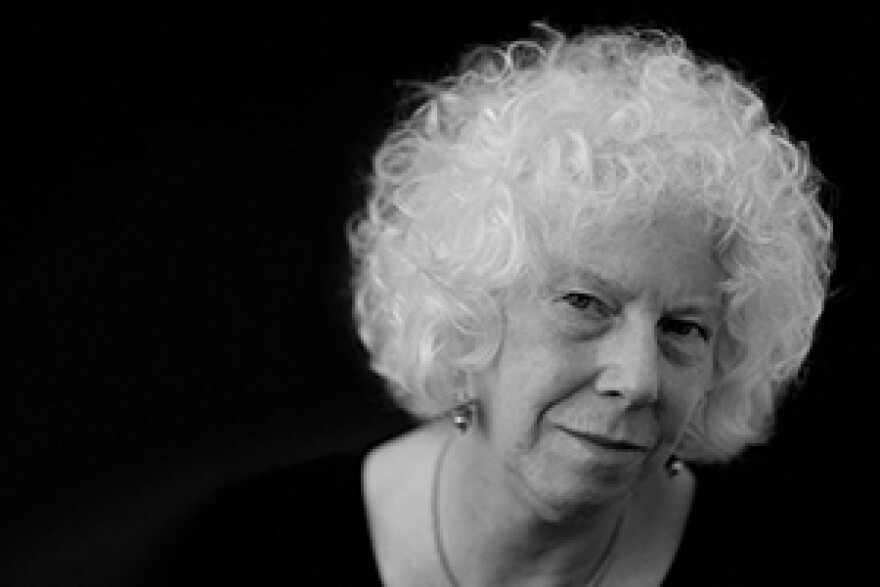Many arts professors spend their time out of the classroom on creative projects. But along the way, education and mentoring are never far from mind. Some creative arts educators even take their portfolios on the road, speaking to the next generation of students at colleges and universities around the country. A photography professor with decades of experience recently spoke to students at Black Hills State University.
Nearly 60 students and faculty sit in front of a large projector screen as professor Steve Babbitt introduces the guest, Linda Connor.
“I Googled her this morning putting this together-crashed my computer. Crashed my computer. My computer said ‘sorry I can’t. There’s too much.’”
74 year old Connor has taught at the San Francisco Art Institute for 49 years...and Babbitt is a former student.
“But what a Google search of Linda won’t tell you is the commitment she has had over her entire life of being an educator and a mentor to artists and particularly artists involved in photography.”
Linda Connor ushers the students to the front row and begins.
“What I’m going to show you first is a book of mine called Odyssey which covers about 35 years of work.”
The lights turn off and classical music plays. Worn looking photos with a soft, sepia (SEE pee uh) tone and blurred corners linger on the screen. Most feature locations and buildings painted with light— images from her travels. The occasional portrait shows people from around the world in traditional dress, or even images of the stars blurred as they move across the sky.
"I do most of my work when I’m away from home, traveling. Occasionally I’ll do some still life work at home, but generally most of it is somewhere else--either landscape or cultural things, or a mix.”
The 20 minute presentation features 180 images. Students watch it in silence. This type of work isn’t something you see everyday...partly because Connor uses a large format camera. That’s the big, old timey machine with an accordion like lens and a curtain that hangs over the photographer’s head.
“It’s a very simple device. It has few knobs, it has no wiring, the model doesn't change. It’s physically demanding, but I love it.”
When Connor visits locations, her equipment helps her feel a connection to the past. She tries to capture that feeling through the lens and let viewers imagine an experience. She doesn’t interrupt the presentation to explain images because...
“I hate putting words to things. I like putting pictures together and figuring out what happens and what that communicates visually and emotionally and sort of philosophically rather than putting a label on it.”
After the slideshow come the questions…
“What is that photo-it’s like a white circle and it kind of looks like it’s burned? What is that a photo of?”
Connor: “Oh that was an eclipse, but it’s a negative eclipse. Sometimes on the glass plates they would make a contact…
Another student asks what Connor’s longest exposure time was.
“Probably six hours, star trails. Or the Oculus-the one of the open done-that was 14 years. No..but I’ll explain.”
Connor tells the students how she tried to capture an image of the stars through the open dome, but clouds ruined the exposure. So 14 years later, she finally got the photo she imagined.
She isn’t afraid to experiment. Connor says she likes to play with different types of objects, subjects and light. But it’s not as easy as coming up with an idea and getting the perfect photo.
“You develop an idea. You don’t come up with an idea and then it’s all execution. You have a notion, you try something. And if it seems to have some potential, you push it a little further and and it develops into something you could begin to define.”
Connor creates work that gives people a visual experience they might have missed, even if they saw the subject first hand.
“I’m not telling you you’re supposed to get a particular, distinct message. It’s more like an offering of something.”
Different aspects of the presentation stood out to each student. Joshua Adkins Senior is a Photography major at Black Hills State.
“I have a passion I guess for the darkroom and film. So it’s nice to see that someone is still being productive and they’re pursuing that passion compared to more modern i guess, just digital printing.”
Other students were drawn to Connor’s persistence. Katie Jones is also majoring in Photography.
“I love how stubborn she was in what she wanted to do and the fact that she was just going to go out and do it regardless. I also thought it was cool how she thought of different paths of what she wanted to do but ended up finding something about herself that she was truly passionate about and still following it regardless.”
That passion and unique style have helped Connor make a mark in her career as a professor and photographer. She wants her work to be remembered for its impact on the individual.
“I hope others coming later will find some interest and beauty in it and maybe see parts of the world that no longer exist. And that that might spark their imagination.”
Connor says she wants her images to help viewers connect to different cultures, nature and people. Connor works to create an appreciation of contemporary photography, like her own, through the San Francisco nonprofit, Photo Alliance.

